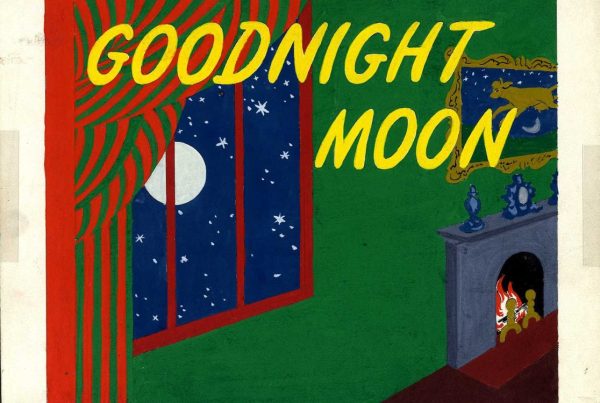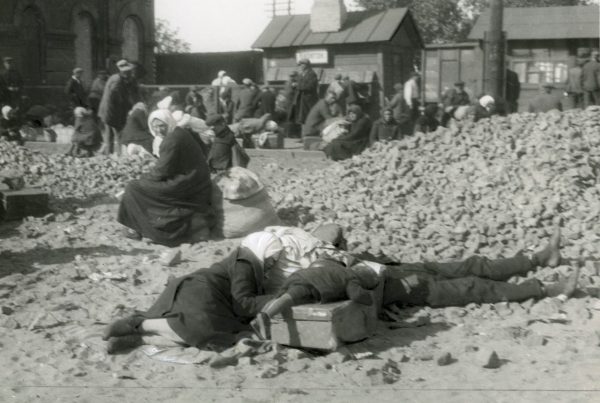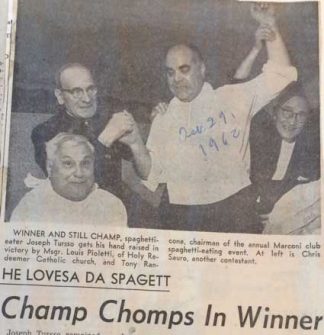
Figure 1, from the John Aloysius Vannelli papers: Newsclipping of an annual spaghetti eating competition in the basement of a parish Church, from the Immigration History Research Center Archives’ Vannelli Papers.
Minnesota was not the favored destination of Italians crossing the Atlantic in search of a new life and wouldn’t perhaps be the obvious place for a world-leading treasure trove, but thanks in great part to one of the Immigration History Research Center’s former directors, Dr. Rudy Vecoli, the Italian American collection, now of the Immigration History Research Center Archives, is second to none.
During my stay, my own research focused on the oral narratives that Italians brought to the USA and how they survived, evolved, and were passed down in Italian American communities. So where are these fairy tales? Where in the thousands of feet of archive boxes can we unearth tales from Italy?
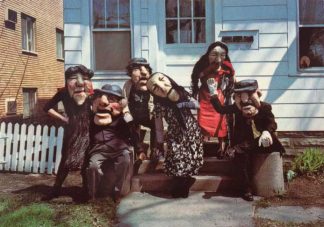
Figure 2, from the John Aloysius Vannelli papers: Photograph of the cast of a Befana performance by the Heart of the Beast Puppet Theatre, from the Immigration History Research Center Archives’ Vannelli Papers.
The first obstacle to overcome is the fact that a great many of the Italians who came in the early 20th century were illiterate: a century after the fact, how then do you trace records of orally-transmitted stories when the tellers couldn’t write? In practice you first look for the records of the sons and daughters, the second generation, that is literate, typically English-speaking, and Italian American.
This is where the IHRCA is especially useful as a repository — as the personal memoirs, unpublished autobiographies, and family histories that were donated to the archive give fascinating insight into the wide range of experiences of Italians and Italian Americans not only in Minnesota but across the United States. Even with these resources, you rarely come across something so tender as the tales told during childhood; occasionally the odd reference to storytelling surfaces, but the diamond in the rough is to find an account of the whole story and the context surrounding it. For this, oral histories of Italians in the U.S. are often the best bet, and there are quite a few kept at the IHRCA.
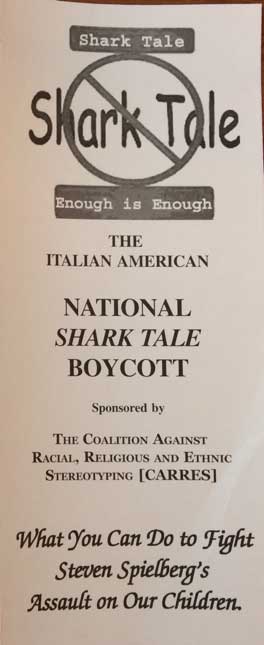
Figure 3, from the Robert Tanzilo papers: Pamphlet boycotting the perpetuation of national stereotypes of Italians as Mafiosi in Steven Spielberg’s Shark Tale, from the Immigration History Research Center Archives’ Tanzilo Papers.
But this is only the tip of the iceberg. As you go through piles of papers, you discover so much more than what you were hoping to find: newspaper cuttings detailing an annual spaghetti eating competition in the basement of a parish Church (Figure 1), a fun but nonetheless slightly unsettling photograph of the cast of a Befana performance by the Heart of the Beast Puppet Theatre (Figure 2), or a pamphlet boycotting the perpetuation of national stereotypes of Italians as Mafiosi in Steven Spielberg’s Shark Tale (Figure 3).
This was my second visit to the IHRCA, and I was thrilled to find myself in the newly opened Wallin Center at the Andersen Library, a superb new section with exhibition area, lockers, and spacious reading room. My top tip for researchers coming to study the Italian American collection would be to browse Rudolph Vecoli’s papers as well as focus on your specific key areas; you might find a connection you were not expecting. But beware: there are 128 linear feet of materials, so choose carefully!
I would like to thank all the staff and student helpers at the IHRCA for their support during my stay. Daniel Necas deserve a special mention for his patience at the deluge of requests that he painstakingly retrieved for me every day, and for once taking me down to the cave of immigrant wonders to see all the treasures therein.



